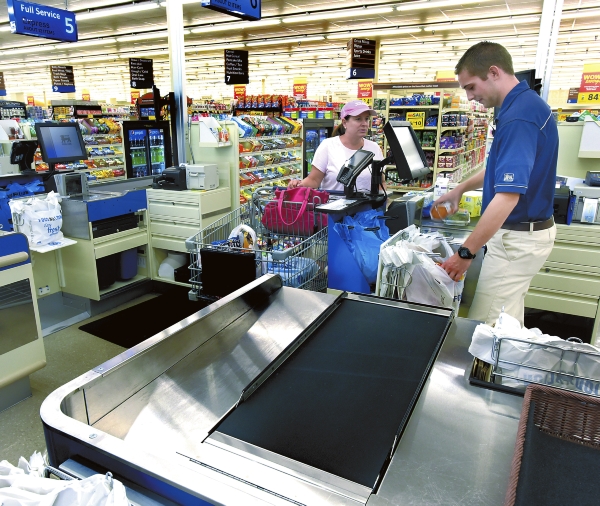Report: Salisbury fares well compared to national average for cost of living
Published 12:03 am Friday, February 18, 2022

- Customer Teen Aron at a checkout counter with cashier Casey Stiller at the Mahaley Ave Food Lion Store in 2016. Wayne Hinshaw, for the Salisbury Post
SALISBURY — The city’s cost of living was 8% lower than the national average last year, but not all goods and services were cheaper in Salisbury than other urban areas in North Carolina.
Salisbury’s utilities and transportation were more affordable than most places. Groceries were more expensive locally than in Charlotte, Raleigh or Winston-Salem. Health care costs were on par with cities across the country.
Catawba College students compile numbers about the cost of living the guidance of Ketner School of Business Dean Eric Hake. The students, and sometimes Hake or other Catawba faculty members, gather data on a number of products and services in Salisbury — from the price of ground beef to the monthly cost of an apartment.
The numbers are submitted to the Council for Community and Economic Research, which releases reports quarterly on the costs of groceries, housing, utilities, transportation, health care and miscellaneous goods and services in hundreds of urban and metropolitan areas. In the council’s report, a score of 100 indicates an area ranks at the national average. The cost of living index is not used to gauge inflation.
With a composite index score of 92, Salisbury is eight points below the mean. Salisbury’s composite cost of living index was not only lower than the national average, but also less than Charlotte (94.8), Raleigh (92.8), Winston-Salem (95.6) and Asheville (106.2).
Salisbury’s 2021 scores are the following:
• Grocery items: 100.7
• Housing: 76.8
• Utilities: 97
• Transportation: 96.7
• Health care: 100
• Miscellaneous goods and services: 98.8
Each of the scores are weighed differently to obtain the overall composite index. For example. Housing is 30.9% of the composite. Health care is 4.42%.
The city’s lower-than-average cost of living is a selling point for people like Rod Crider, president of the Rowan Economic Development Council. With the potential for thousands of jobs coming to Rowan County through a number of economic projects, Crider and his staff have ramped up efforts to attract more workers to the area.
“There’s going to be pressure on our labor market like we haven’t seen, so we’re going to have to be able to attract new laborers here,” Crider said.
When Crider and the EDC pitch a company or a worker on moving to Rowan, cost of living is typically brought into the conversation. Crider specifically pointed to Salisbury’s housing cost index of 76.8%, which was the city’s lowest cost of living category.
The average price of a 950-square-foot, two bedroom, unfurnished apartment in Salisbury was $954, which was lower than in Charlotte, Winston-Salem, Raleigh and Asheville. Meanwhile, the average purchase price for a 2,400-square-foot, four-bedroom, two-bathroom house in Rowan County was $289,330, which was higher than Charlotte’s average price of $281,522 and Winston-Salem’s price of $228,299, but much lower than a home in Raleigh at $323,846 or Asheville at $472,724.
“That would be very attractive to younger people who may be looking to start a career and go to an area with affordable housing,” Crider said.
Like the Rowan EDC, the Rowan County Chamber of Commerce promotes Rowan County’s relatively low cost of living in its talent attraction efforts.
“Our community having a lower cost of living certainly helps us attract and retain citizens,” Chamber President Elaine Spalding said.
Cost of living is one of the metrics the Chamber’s Workforce Development Alliance monitors. It’s also a statistic the Chamber includes in its newcomer packets, which are sent to people who have recently relocated to the area.
Spalding said the number of newcomer packets has increased since the start of the pandemic, from 20-30 newcomer packets per month to about 70. Spalding attributes the number of newcomers at least in part to a less expensive way of life.
“People can live anywhere with remote work and they want to be in a smaller community with low cost of living,” Spalding said.
The most expensive urban area on the list was Manhattan, New York, which had a composite index more than twice the national average, followed by San Francisco, Honolulu, Brooklyn, New York, and Washington, D.C. The least expensive area at almost 25% below the national average was Kalamazoo, Michigan, followed by Harlingen, Texas, and McAllen, Texas. Muskogee, Oklahoma, and Jackson, Mississippi rounded out the five least expensive.





